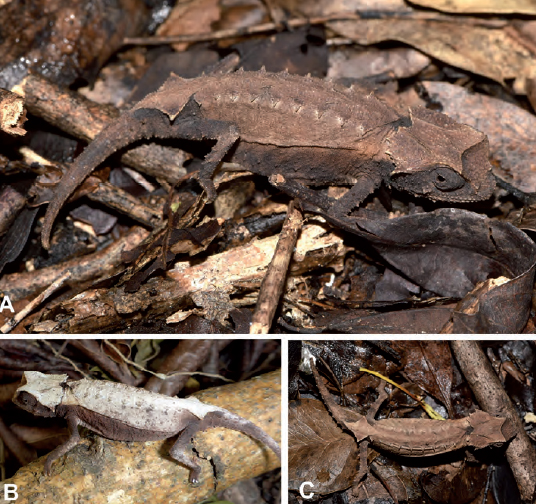Until now, it was thought that the earth chameleon Brookesia bonsi occurs exclusively in the Tsingy of Namoroka in western Madagascar. German and Malagasy researchers have now discovered that very close relatives of the species live a good 150 km further north, not far from the coastal town of Mahajanga. The earth chameleons from a forest near Antsanitia look more like Brookesia decaryi on the outside, but genetically they are more closely related to Brookesia bonsi. In contrast, the true Brookesia decaryi from Ankarafantsika, 80 km east of Mahajanga, seems to be exclusively restricted to this occurrence and not more widespread, as originally assumed. In the same studies, the scientists found that another population of leaf chameleons from the UNESCO World Heritage Site Tsingy de Bemaraha is also closely related to Brookesia bonsi. The leaf chameleons of the population found there had previously been assigned to Brookesia brygooi on a purely visual basis.
Further work is now necessary to clarify the exact genetic identity of Brookesia aff. bonsi. Are they separate species or merely locally isolated populations of Brookesia bonsi? One thing, however, is already certain: the habitat near Mahajanga should urgently be placed under protection. The leaf chameleons must be protected so that they can be studied further. According to current data, they could already be critically endangered (IUCN). And further research could still be very exciting!
New records of threatened leaf chameleons highlight unexpected genetic diversity of the Brookesia decaryi / B. bonsi species complex in western Madagascar
Frank Glaw, Njaratiana A. Raharinoro, Rojo N. Ravelojaona, David Prötzel und Miguel Vences
Der Zoologische Garten 90, 2022 (1)
DOI 10.53188/zg003


